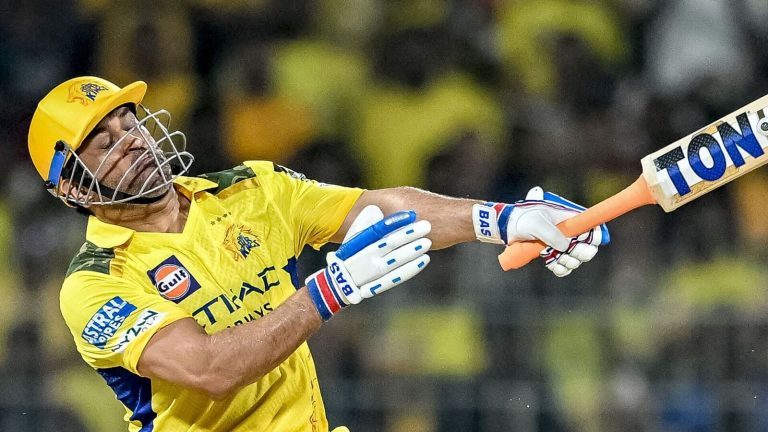As Chennai Super Kings were floundering in their chase against Royal Challengers Bangalore at Chepauk, one question was on the minds of all those watching: where was MS Dhoni? Why hadn’t he come out to bat yet?
CSK fell to 99 for 7, needing 98 runs more to win in just 28 balls when Dhoni finally walked in. He had batted at No.9 only once before in his entire T20 career: in the IPL last year against Punjab Kings. CSK were batting first on that occasion, and already had a par-plus total.
On Friday (March 28), CSK were sinking. The required run-rate was more out of reach with every over, and every ball. What they needed was the big hits that their icon is famous for, but batter after batter came out and there was no sight of Dhoni. When he did bat, the target was already unachievable for all practical purposes.
Prominent voices unhappy with Dhoni at 9
It was a move that drew some criticism from former cricketers and commentators.
Irfan Pathan unequivocally said that he would never be in favour of Dhoni batting so low.
Robin Uthappa felt the move didn’t make any sense, and pointed to the possible net run-rate boost that was missed out.
Harsha Bhogle seemed to be puzzled by the move too.
Dhoni ended up scoring an unbeaten 30 from just 16 balls, although before the final over started he was on a more mundane 14 off 10. If he had walked in earlier, there was the possibility of narrowing the margin of defeat and limiting the net run-rate damage, as Uthappa suggested.
The new reality
The fact is, Dhoni has been walking in fairly late in all CSK’s games since the last couple of years. He generally comes behind anyone with some sort of batting ability during the normal course of an innings. The only times he comes up higher is if a wicket falls with the innings close to ending.
This is likely due to CSK wanting to manage Dhoni’s workload. He’s still going to be the ‘keeper for 20 overs each game. That his glove-work remains top-notch was shown by the lightning quick stumping he effected to send back an aggressive Phil Salt.
But an hour later, the stumping was forgotten as people wanted Dhoni the batter to also stamp his mark on the game. However, as a nearly 44-year-old, Dhoni has already lasted longer in the game than almost anyone else. With age comes some sacrifice, some compromise. The make-up of CSK’s squad is such that there is a plethora of allrounders. That allows Dhoni the luxury of batting as late as possible. It’s a luxury that is earned, both because of what he can still do with the bat when he has to only swing freely for a limited time, and because it keeps him in shape for his keeping, which brings almost a wicket per game.
CSK coach Stephen Fleming said that Dhoni’s preparation and fitness has been on point.
“He’s had a substantial pre-season, he’s been here for well over a month,” Fleming said after the RCB loss when asked about Dhoni’s ability to effect lightning quick stumpings and hit sixes. “So he’s done a lot of work with the trainers to get himself into shape. He’s very professional in that way. And, just natural ability.”
That natural ability made Salt’s stumping possible. The professionalism is perhaps what led to a realistic assessment of what a managed workload for a full season would be like, and led to Dhoni batting so low. It’s a reality that the cricket world will have to accept.



